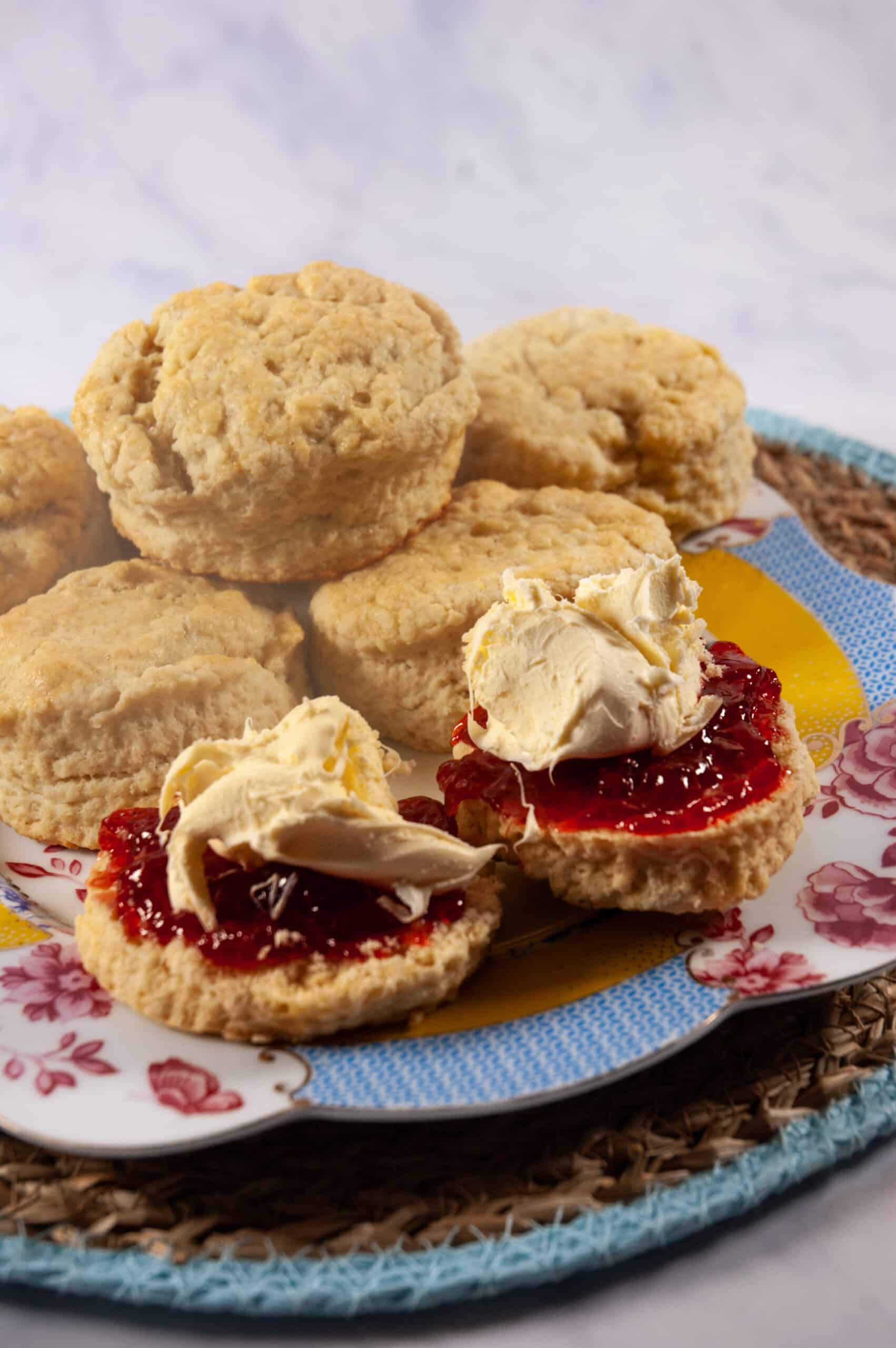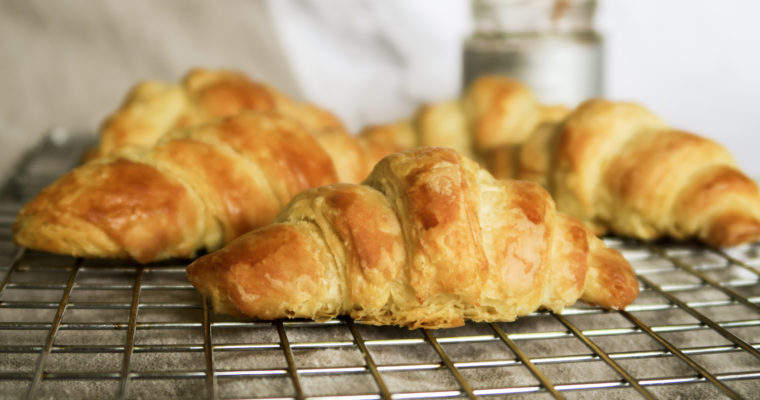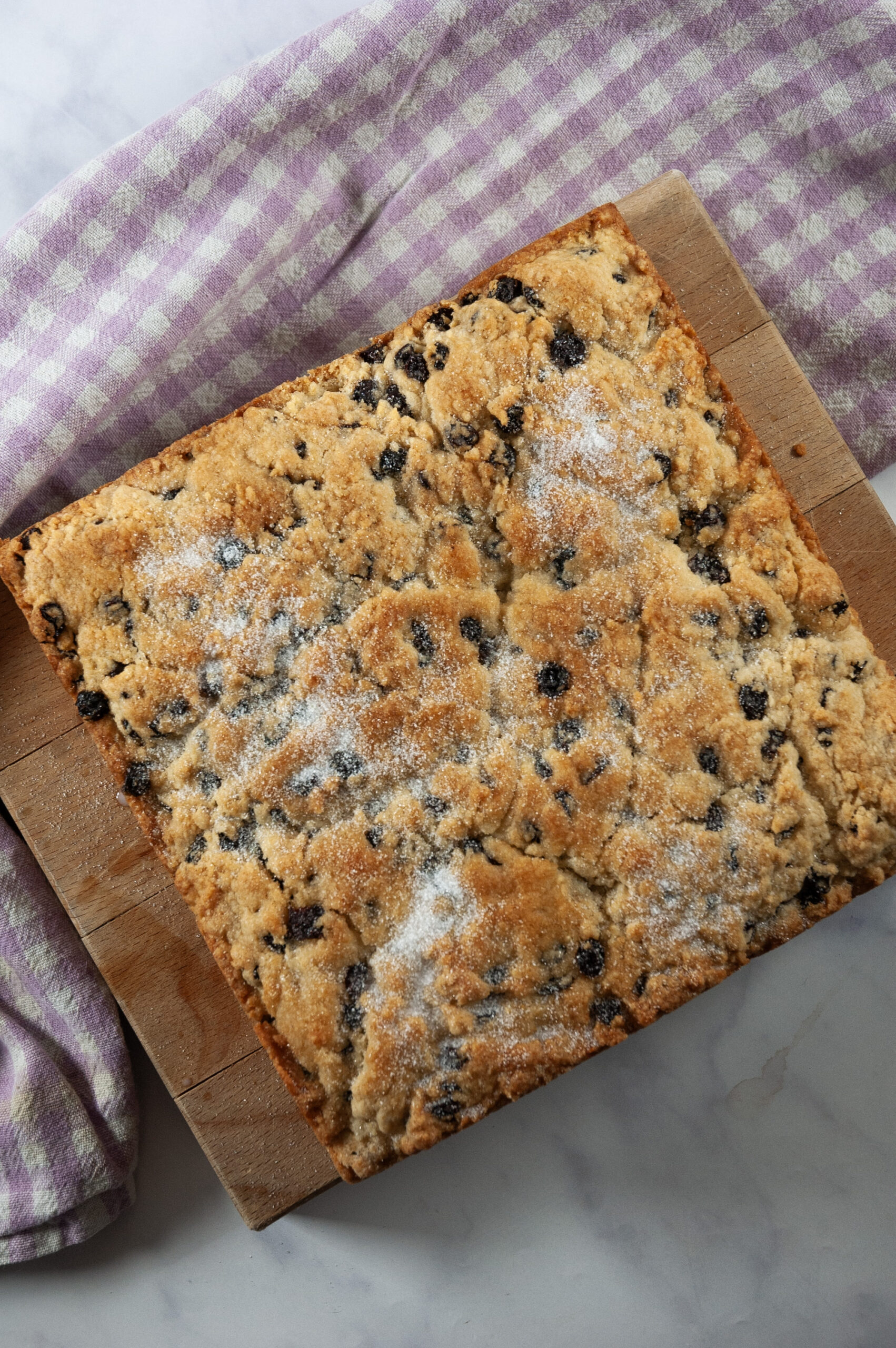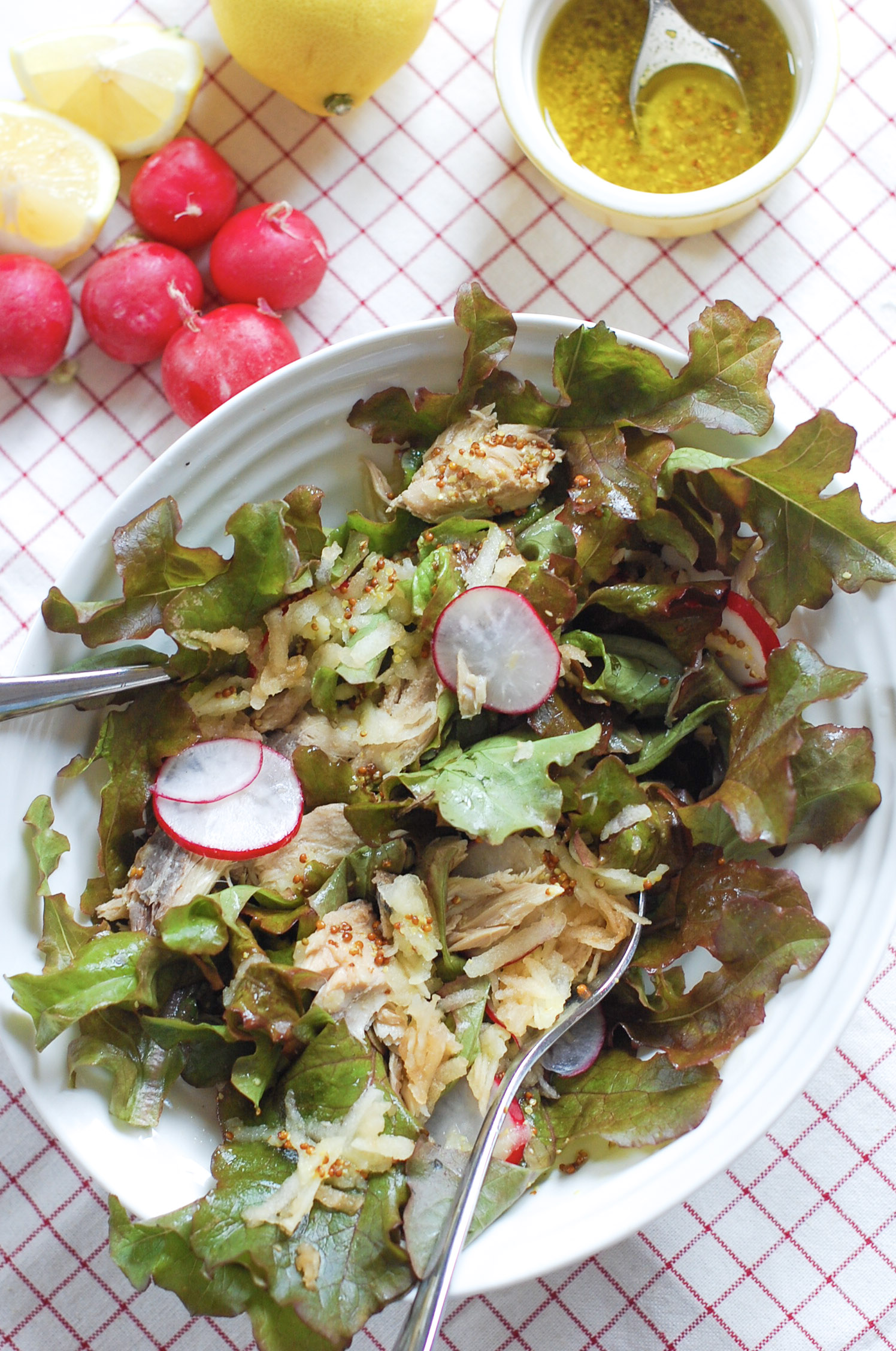Best Classic Buttermilk Scones Recipe
Buttermilk scones are a timeless treat enjoyed by many for their flaky, buttery texture and rich flavor.
The recipe provided here is a simple yet delicious way to make these scones, perfect for breakfast, afternoon tea, or any special occasion. Pretty much as good as this Traditional Cornish Splits recipe!
Before delving into the detailed history and tips for making the best buttermilk scones, let’s review the essential ingredients and the step-by-step instructions for this recipe.
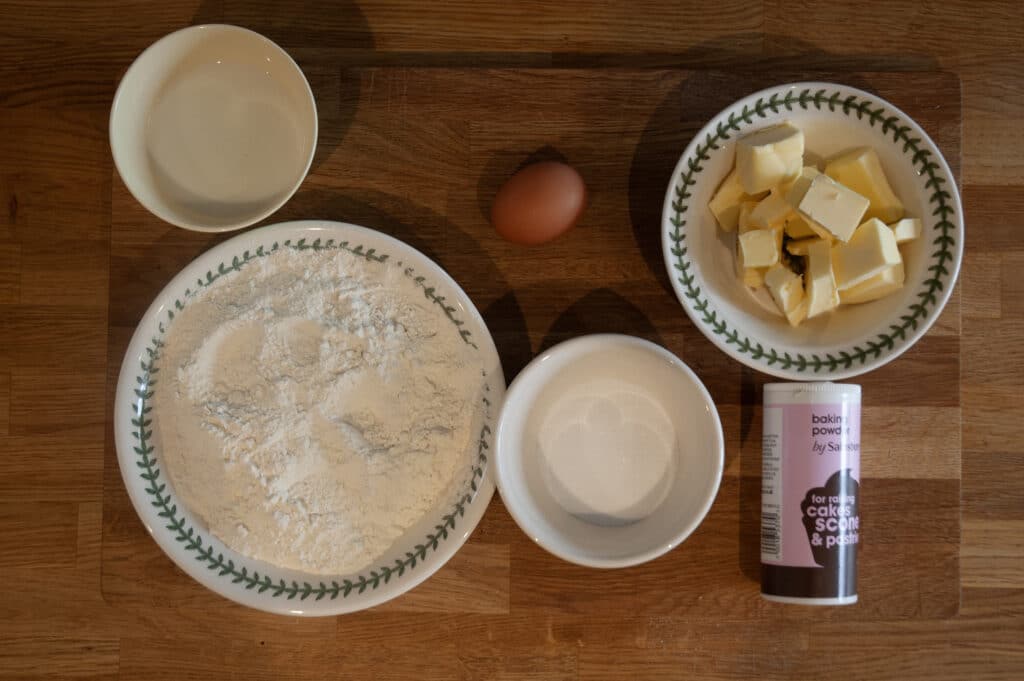
Ingredients needed for Buttermilk Scones
Scroll down to the recipe card for exact quantities.
Self-raising flour – my go-to flour is from Shipton Mill as it produces the fluffiest bread!
Unsalted butter, cut into small chunks
Caster sugar
Baking powder
Buttermilk
Eggs
Whole milk – although semi-skimmed will work fine too.
Clotted cream – I like to use Rhodda’s as it’s made in Cornwall and it’s what I grew up eating!
Strawberry jam – the classic choice! Although feel free to go rogue and choose a different flavour!
How to make Buttermilk Scones (step by step)
Step 1 – Sieve the flour, baking powder, and a pinch of salt into a large bowl.
Step 2 – Cut the cold butter into small chunks and rub into the flour mixture using a pastry cutter or your fingertips until it resembles coarse crumbs. Mix in the caster sugar.
Step 3 – In a separate bowl, mix together the buttermilk and egg. Pour the buttermilk mixture into the flour mixture and mix gently until a dough forms.
Step 4 – Lightly dust a surface with flour and roll out the dough to about an inch thick. Use a round cookie cutter to cut out the scones. Be careful not to twist the cutter too much, as this can affect the rise.
Step 5 – Place the scones on a lined baking tray.
Step 6 – Mix together the extra egg and milk to make an egg wash. Brush onto the scones.
Step 7 – Bake at 180 degrees Celsius (350 degrees Fahrenheit) for 10-15 minutes or until golden brown.
Equipment needed
Sieve
Measuring spoons
Large bowl
Small knife
Whisk
Rolling pin
Round cutter 7cm
Large baking tray (lined with baking paper)
Small bowl
Pastry brush
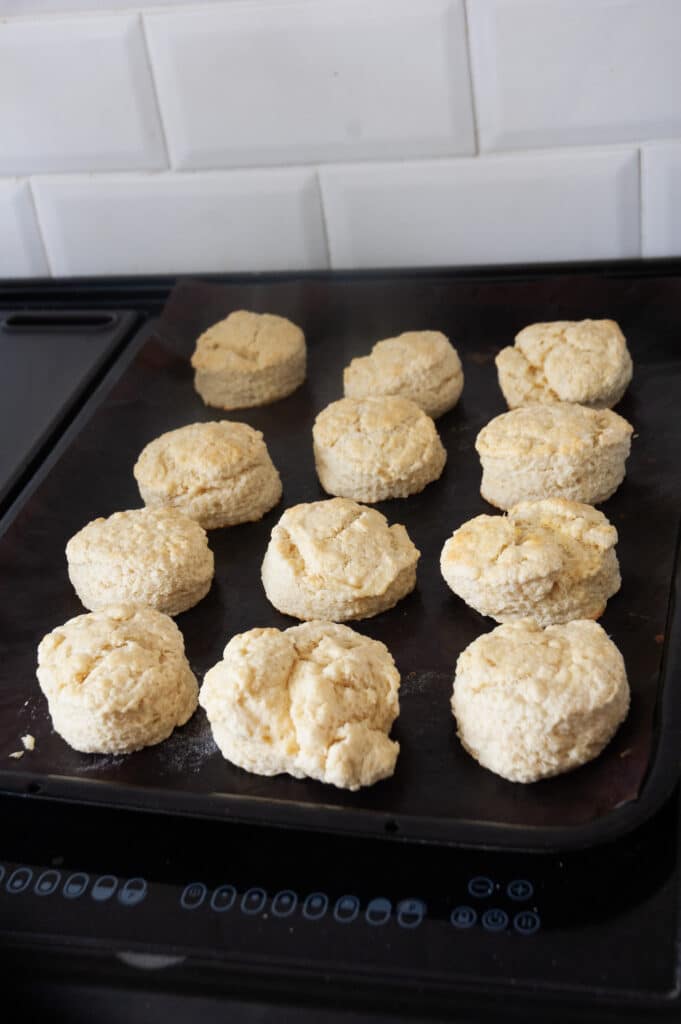
History of the scone!
Scones have a rich history, rooted deeply in British culture. Originating from Scotland, the term “scone” is believed to have come from the Middle Dutch word “schoonbrot,” which means fine bread. Another theory suggests that it was named after the Stone of Destiny (or Scone), where Scottish kings were once crowned.
The earliest scones were round and flat, made with oats and cooked on a griddle, much like today’s oatcakes. The introduction of baking powder in the 19th century revolutionized scone baking, allowing them to rise and become the light, fluffy treats we enjoy today.
Scones became particularly popular in England during the 19th century as part of the traditional afternoon tea, a practice started by Anna, the Duchess of Bedford. The introduction of buttermilk into scone recipes added a tangy flavor and tender texture, making buttermilk scones a beloved variation.
Serving suggestions
Obviously the classic serving suggestions is jam and clotted cream. But which goes first, the jam or the cream? I’m Cornish so the only way is JAM FIRST!
I’ve seen people using heavy cream or squirty cream. Despite not being traditional, desperate times call for desperate measures and if this is all you can get your hands on, go for it!
You could also serve scones with a side of fresh fruit for a light and refreshing accompaniment. Maybe fill your scone with some fresh strawberries a long with the jam?
Lemon curd is another lovely spread to pair have with buttermilk scones. Its tartness pairs beautifully with the rich, buttery scones.
To be honest, any jam spread would be delicious with scones.. blueberry, blackberry, raspberry… whatever you have in your cupboard!
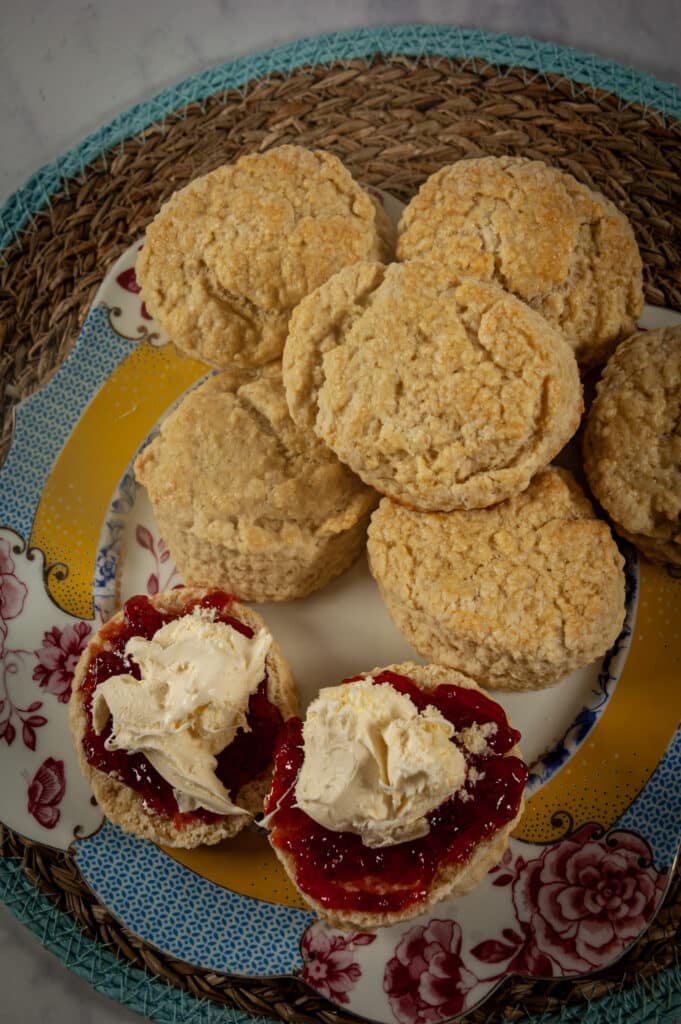
Scone variations
Blueberry Scones
Add fresh blueberries to the scone dough for a burst of fruity flavor. This variation is especially popular during the summer months when blueberries are in season.
Chocolate Chip Scones
For a sweeter treat, mix chocolate chips into the dough. These scones are a hit with children and make a delightful dessert.
Lemon Buttermilk Scones
Incorporate both lemon zest and a tablespoon of fresh lemon juice into the dough. Finish with a lemon glaze made from powdered sugar and lemon juice for a tangy, sweet treat.
Currant Scones
Traditional currant scones are a staple in British afternoon teas. The dried currants add a subtle sweetness and chewy texture.
Pumpkin Scones
Perfect for autumn, pumpkin scones are made by adding pumpkin puree and spices like cinnamon and nutmeg to the dough. They are often topped with a spiced glaze.
Top Tips
When cutting the scones with your cutter, try not to twist the cutter as this can affect the rise of the scones. Gently lift the cutter up if possible.
Using frozen butter and grating it into the flour mixture can create an even flakier texture. This technique ensures that the butter stays cold until it hits the hot oven.
For a quicker method, use a food processor to cut the butter into the flour. Pulse just until the mixture resembles coarse crumbs.
To keep scones fresh for longer, store them in a freezer bag. Reheat in the oven before serving to enjoy warm, flaky scones.
If you plan to eat the scones within a day or two, an airtight container will keep them fresh. Scones are best enjoyed fresh out of the oven, but this storage method will keep them from drying out.
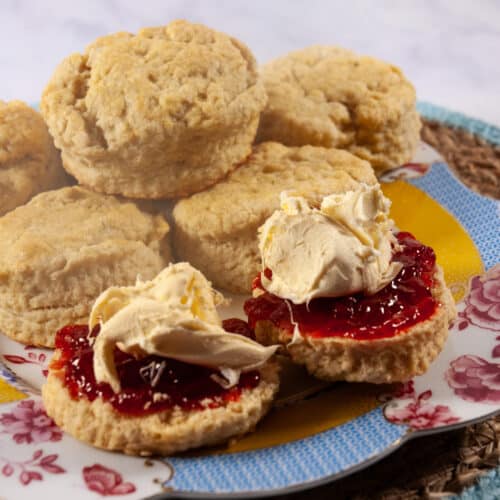
Classic Buttermilk Scones
Equipment
- 1 Sieve
- 1 Measuring spoons
- 1 Large bowl
- 1 Small knife
- 1 Whisk
- 1 Rolling Pin
- 1 7cm round cutter
- 1 Large baking tray lined with baking paper
- 1 Small bowl
- 1 Pastry brush
Ingredients
- 400 g self-raising flour
- 150 g unsalted butter
- 50 g caster sugar
- 1 tsp baking powder
- 100 ml buttermilk
- 1 egg large + extra for egg wash
- 1 tbsp whole milk
Instructions
- Sieve the flour, baking powder, and a pinch of salt into a large bowl.
- Cut the cold butter into small chunks and rub into the flour mixture using a pastry cutter or your fingertips until it resembles coarse crumbs. Mix in the caster sugar.
- In a separate bowl, mix together the buttermilk and egg.
- Pour the buttermilk mixture into the flour mixture and mix gently until a dough forms.
- Lightly dust a surface with flour and roll out the dough to about an inch thick. Use a round cookie cutter to cut out the scones. Be careful not to twist the cutter too much, as this can affect the rise.
- Place the scones on a lined baking tray.
- Mix together the extra egg and milk to make an egg wash. Brush onto the scones.
- Bake at 180 degrees Celsius (350 degrees Fahrenheit) for 10-15 minutes or until golden brown.

